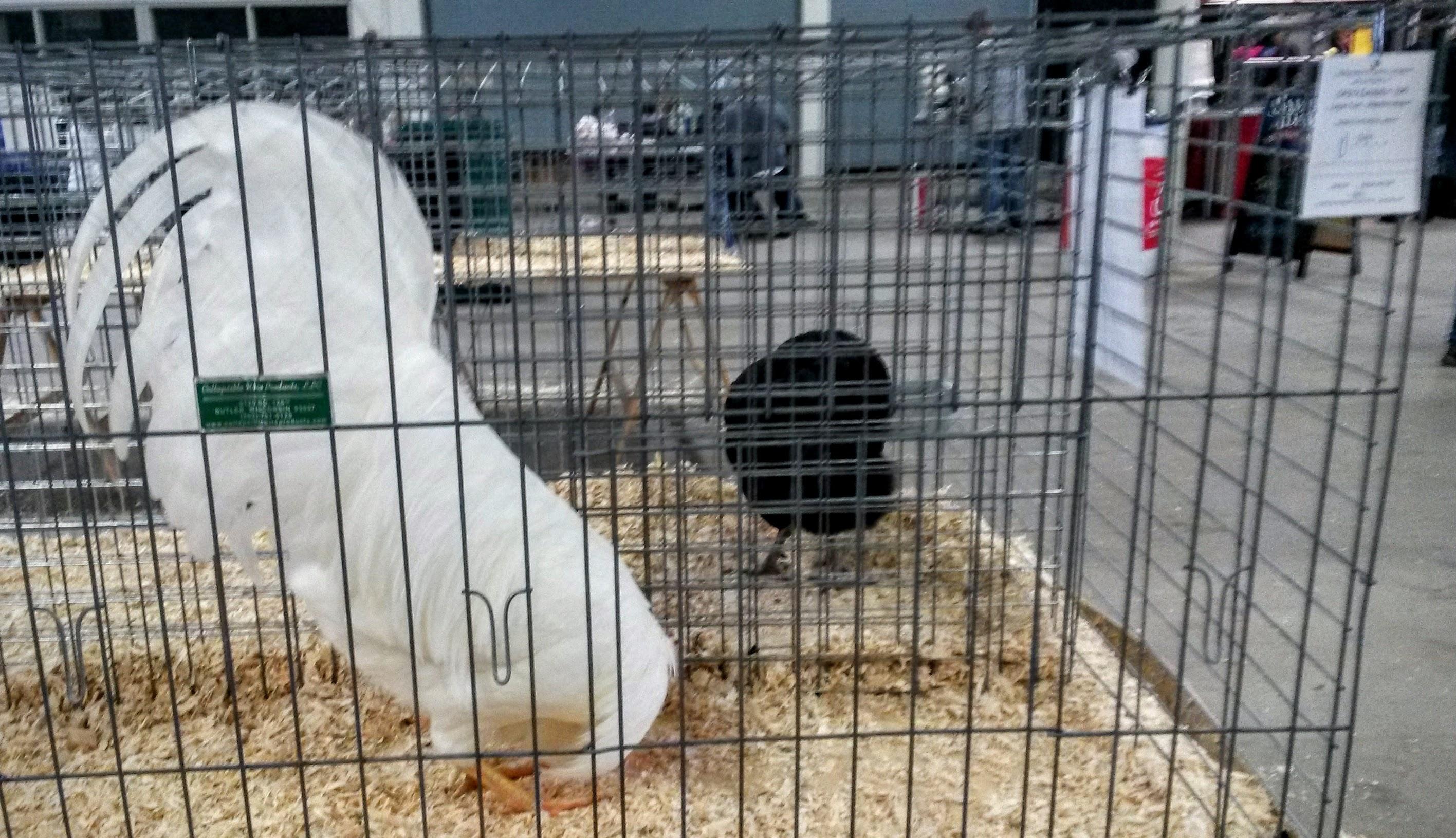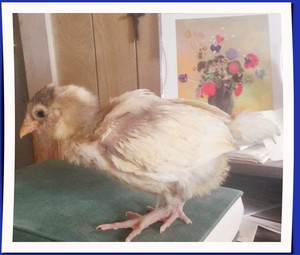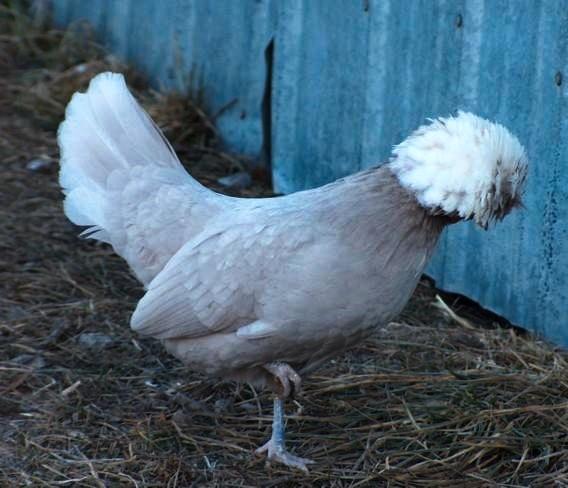25 Apr Mon 2016
White leghorn cockbird
When I was at the Northeastern Congress Poultry show in Springfield Massachusetts back in January I took a lot of pictures. At the time I posted some but most I did not. This white leghorn male was one that caught my eye. I was taken aback by their tail feathers. I never realized how long and spectactular it was. I don't remember the exhibitor but it is a beauty.

Khaki Polish Tolbunt
I love the colour. I was surprised to learn that it is khaki, I thought it was porcelain. Well, anyways, I'm thinking of bringing that colour over to Ameraucanas, sans the crest of course. There are several problems in doing this: removing the crest, it's a dominant gene so that will take a while; getting the correct size (Tolbunts run a bit smaller than Ams) and finally getting the blue egg.
Duck Love from the WSJ
Chicken themes for your desktop
Ok, these set of themes is for Windows only , but otoh, there are some adorable chickens with hats. Interested? Go here.
Now, if you are not familiar with the Tumblr site, Chickens with hats, it is still around but pretty much defunct. She has gone onto to bigger, much bigger, things. So instead go and look at the calendar, over here.
Feeding chickens meat scraps or tankage
Meat scraps are widely used in poultry rations to supply protein and minerals. The amount used is generally between 5 and 15 per cent. Milk and fish meal are sometimes used in place of all or a part of the meat scraps in poultry rations but tankage is another kettle of fish.
Tankage is a packing house by-product somewhat similar to meat scraps and it generally contains 60 per cent protein, while meat scraps generally contain 50 per cent, so far sounds good, but tankage can be prepared by cooking under live steam or by the dry-rendering process. It's hard to know what the packing house did unless they label that. The latter process produces a product of higher nutritive value. "Stick," or the cooking water residue, and blood meal are often added to raise the protein content to 60 per cent, but these products are of low biological value and so tankage may be of lower nutritive value than meat scraps and as a rule should be avoided.


